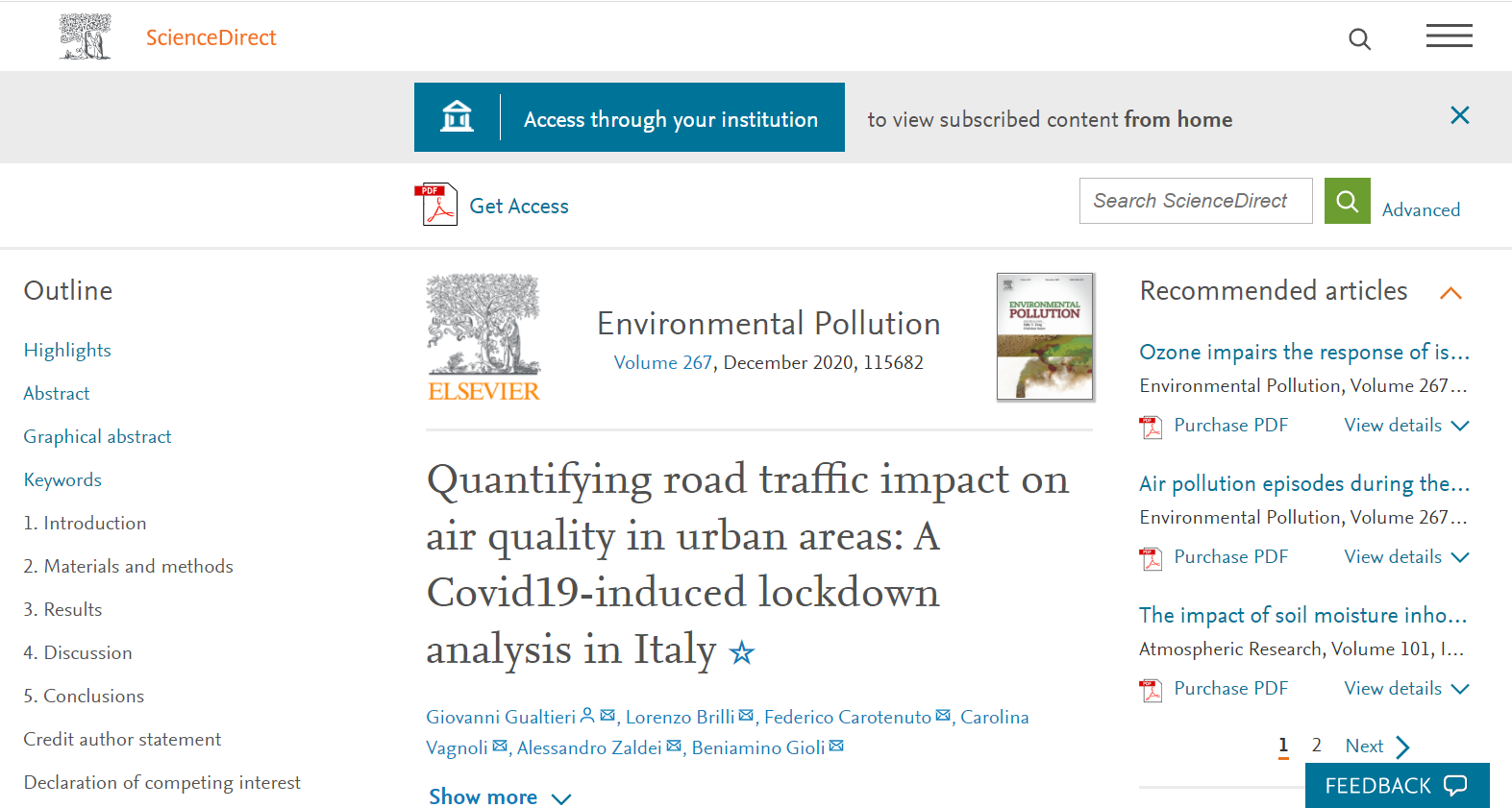Covid19-induced lockdown measures caused modifications in atmospheric pollutant and greenhouse gas emissions. Urban road traffic was the most impacted, with 48–60% average reduction in Italy. This offered an unprecedented opportunity to assess how a prolonged (∼2 months) and remarkable abatement of traffic emissions impacted on urban air quality. Six out of the eight most populated cities in Italy with different climatic conditions were analysed: Milan, Bologna, Florence, Rome, Naples, and Palermo. The selected scenario (24/02/2020–30/04/2020) was compared to a meteorologically comparable scenario in 2019 (25/02/2019–02/05/2019). NO2, O3, PM2.5 and PM10 observations from 58 air quality and meteorological stations were used, while traffic mobility was derived from municipality-scale big data.
NO2 levels remarkably dropped over all urban areas (from −24.9% in Milan to −59.1% in Naples), to an extent roughly proportional but lower than traffic reduction. Conversely, O3 concentrations remained unchanged or even increased (up to 13.7% in Palermo and 14.7% in Rome), likely because of the reduced O3 titration triggered by lower NO emissions from vehicles, and lower NOx emissions over typical VOCs-limited environments such as urban areas, not compensated by comparable VOCs emissions reductions. PM10 exhibited reductions up to 31.5% (Palermo) and increases up to 7.3% (Naples), while PM2.5 showed reductions of ∼13–17% counterbalanced by increases up to ∼9%. Higher household heating usage (+16–19% in March), also driven by colder weather conditions than 2019 (−0.2 to −0.8 °C) may partly explain primary PM emissions increase, while an increase in agriculture activities may account for the NH3 emissions increase leading to secondary aerosol formation.
This study confirmed the complex nature of atmospheric pollution even when a major emission source is clearly isolated and controlled, and the need for consistent decarbonisation efforts across all emission sectors to really improve air quality and public health.
